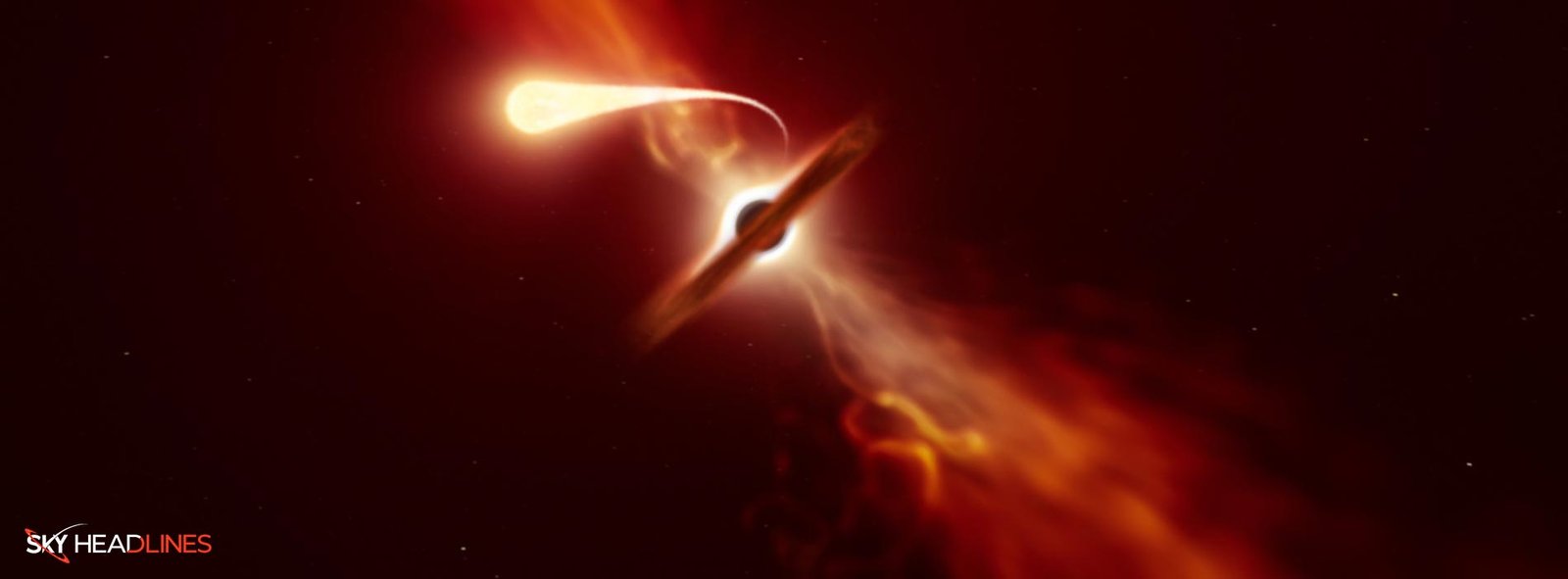Want to know some astounding information about black hole ‘switches on’ and relevant events? If yes, then you’re absolutely in the right place. Here’s given an amazing piece of information to you;
What was the J221951 ‘black hole switches on’ incident?
One of the brightest transient events in the universe occurs when a giant black hole switches on and devours surrounding matter, resulting in a spectacular “switching on” phenomenon. J221951, driven by such a voracious black hole, has been identified as one of the most luminous transients ever observed. Although located in the center of a previously known galaxy where a giant black hole would typically reside, scientists remain uncertain about the cause of the temporary event in J221951.
Valuable insights on the potential of Black holes switches on
Astronomer Matt Nicholl from the University of Belfast stated that recent years have provided significant insights into the capabilities of hungry black holes. Instances like stars being torn apart and black holes accumulating matter with varying degrees of brightness have been observed. However, J221951 has caught astronomers off guard with its astonishing display.
The exact nature of the matter being devoured by the supermassive hungry black hole, located approximately 10 billion light-years away, remains unknown. However, it is speculated that J221951 may result from a star venturing too close to the black hole and being violently ripped apart by the immense gravitational forces, a process known as “spaghettification.”
Is Total Disruption Event may be a Justification for J221951?
During such a tidal disruption event (TDE), fragments of the destroyed star would fall onto the black hole’s surface. At the same time, other matter would be drawn into the hungry black hole’s poles and expelled at nearly the speed of light, generating intense electromagnetic radiation.
The extraordinary brightness and short duration of J221951 could be attributed to more than one mechanism associated with the supermassive hungry black hole. One possibility is the spaghettification of an unfortunate star, while another hypothesis involves the transition of an inactive galactic core to an active state.
Active galactic nuclei (AGNs) are intensely bright regions at the centers of galaxies, outshining all other stars in the observable universe. They are commonly associated with large hungry black holes.
Nicholl explained.
“Continued monitoring of J221951 to determine the amount of energy being released could aid in discerning whether this event is caused by a rapidly spinning black hole tearing apart a star or a novel type of AGN activation”
What were the contrasts in both the incidents, J221951 and Kilonovas?
Observing the dramatic “switching on” event at the galaxy’s core, the team compared J221951 to kilonovas—temporary occurrences resulting from the merger of two neutron stars or a neutron star and a hungry black hole. Kilonovas emit bursts of radiant electromagnetic energy and initially appear blue, gradually transitioning to red over several days. However, unlike a kilonova, J221951 remained blue and did not rapidly fade. Follow-up observations using space-based telescopes like the Hubble Space Telescope and ground-based observatories like the Very Large Telescope (VLT) in Chile’s Atacama Desert provided crucial insights into this transient event.
Paul Kuin, a researcher at the Mullard Space Science Laboratory, University College London, and a team member, emphasized:
“The most significant finding was when Hubble’s ultraviolet spectrum ruled out a galaxy as the source. This highlights the importance of maintaining UV spectrographs in space for future observations,”
Given the 10 billion light-year distance of a black hole switches on, the team recognized J221951 as one of the brightest events ever witnessed. They are now focused on unraveling the underlying cause of this extraordinary event.
Oates said:
“In the future, we will obtain essential clues to differentiate between the tidal disruption event and active galactic nuclei scenarios,”
“For instance, if an AGN causes J221951, we might expect it to cease fading and brighten again. Conversely, if tidal disturbances caused J221951, we anticipate a continuous fading process.”
Over the coming months to years, close monitoring of J221951 will be necessary to understand its behavior during nighttime observations.





